The following morning was wonderful and sunny, but I did not have too much time to enjoy this for I had to move on. The next destination was Potosi and in order to get there I had to take a group taxi. The drive did not take too long and when I did get there I first went to a hotel to leave my things and then started to visit the town.
Potosi is the highest town in the world, in terms that it is the town at the highest altitude. Of course there are villages and settlements that are higher up, but as far as towns go, Potosi holds the first position with its altitude of 4100 m. Surprisingly enough, I did not feel this altitude too much and apart from the occasional breathlessness that I felt as I climbed its steep streets, there were no big problems.
Potosi did not make the same impact on me as Sucre. It is a very nice and pretty town, but after Sucre it just made a weaker impression than what would objectively be the case. Still, it absolutely deserves to be visited and seen. The main significance of Potosi lies in the fact that in its direct proximity, on the mountain Cerro Rico (“rich mountain”), there used to be the biggest silver mines in the world. As the story goes, soon after the arrival of the Spaniards, a local shepherd got lost on the mountain and had to spend a night there. In order to get warm he lit up a fire and later went to sleep. In the morning, at the place where there was a fire the night before, he saw something metallic that shone reflecting the sun. It was silver. There was so much of it that the first mines were of the open pit type. Therefore, they literally scraped silver off the surface. Most of the Spanish colonial wealth came precisely from these mines that were operational for some 200 years. In the meantime, the exploitation moved underground, but today there is not enough silver and the mines are mostly used for extracting tin.
This change in the wealth associated with the ore body, i.e., its depletion, may be seen quite nicely using the example of the so-called House with Three Entrances (Casa de las Tres Portadas) – the entrances are decorated in such a way that at first sight it appears to be stone carving, but it’s not. The builders actually used brick covered with plaster which was then carved. This is a significantly less expensive technique and this suggests impoverishment of the town after the sucking out of silver.
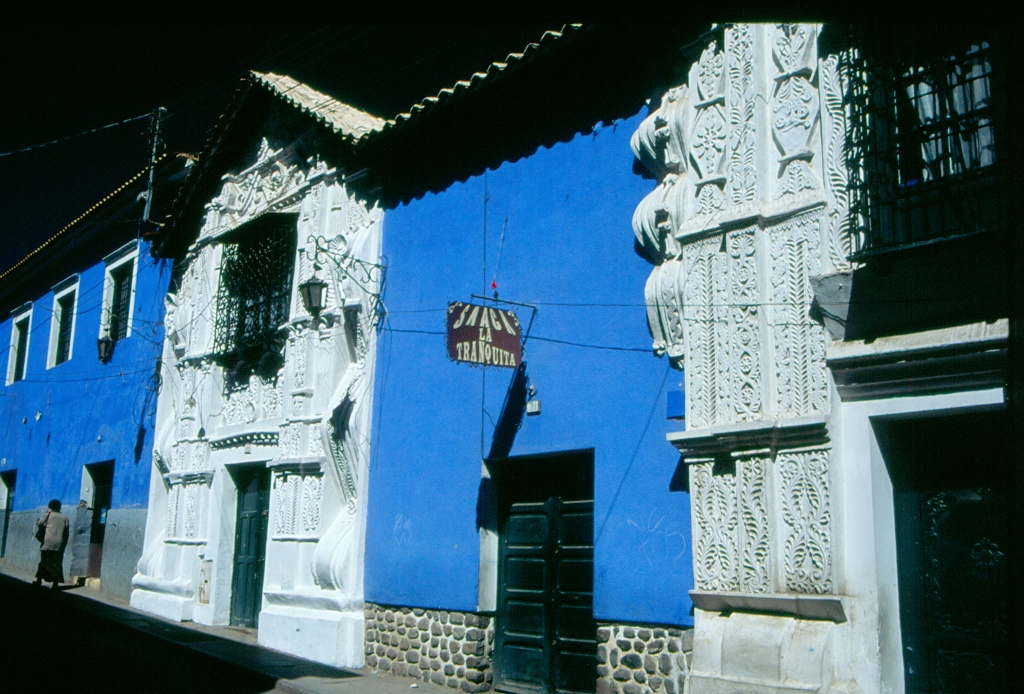 Casa de las Tres Portadas, Potosi
Casa de las Tres Portadas, Potosi
First I went for a walk, sent emails and bought a ticket to Uyuni for the following day. After that I sat in a café where I waited for the main museum in town to be opened after the lunch-break. The museum was the Casa de la Moneda (the old royal mint). Or rather, it used to be a mint. Nowadays this is the name of a museum that is considered to be the best one in all of Bolivia. The building is all made of stone and it is constructed more like a fortress. At the time it was operational, it was used for turning all the collected or excavated silver into bars that were then shipped off to Spain. The visit to the museum was completely organized, it was in groups and one had to follow a guide. Going around was a little unusual since the guide would first unlock the door to a room to which we were heading, she would then tell us what she had prepared and then, as the group would walk around the room watching the exhibits, she would lock the entrance door and unlock a new one leading to another room. That also meant that the visit took far too long for my liking. Along the way the guide asked us where we were from, so when I told her she was quite pleasantly surprised. She said she had been working there for five years and so far she hadn’t come across a person from Serbia. I doubt I was the first Serb there, but then again I do believe few of my compatriots venture here. Anyway, I actually did not enjoy the visit at all. I was very well dressed, but it was extremely cold inside and the thick walls additionally radiated the centuries-old coldness. In addition, I don’t consider myself particularly sensitive to energies, but while visiting these “production units” in which slaves and involuntary local population often literally worked themselves to death, and listening the horrible stories of human suffering, I had an impression all the time that I could hear and feel the cries and misery of those poor people. All in all, I did manage to visit most of the museum, but I eventually gave up and left earlier.
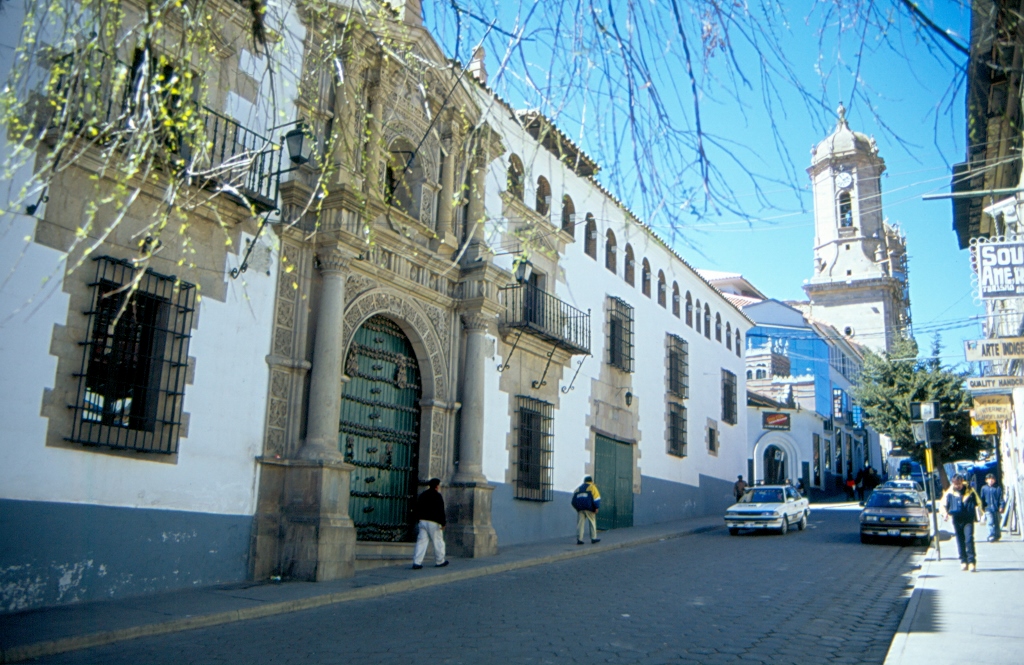 Casa de la Moneda, Potosi
Casa de la Moneda, Potosi
Having left the museum, I started to feel better at once, so I continued with a very leisurely walk around the town. In addition to this museum, beautiful buildings from the past, Potosi also has a large number of churches and they all have a shared, very specific characteristic. Namely, churches traditionally ought to have orientation along the east-west axis, but all of these here are built in such a way that their portal is facing Cerro Rico, which is in the south. I’m always dismayed by this laid-back and random human interpretation of god’s laws which has been leading, throughout the history and to this very day, to disastrous outcomes. Since obviously everybody is allowed to interpret anything they feel like in any way they like, here is my contribution to the trend. The way I interpret this orientation of the churches in Potosi is the following – east-west orientation is important because of God, but there is still something above him and that is – silver! Brrr… Here again I feel this ungodly chill in my bones like the one I felt in the Casa de la Moneda.
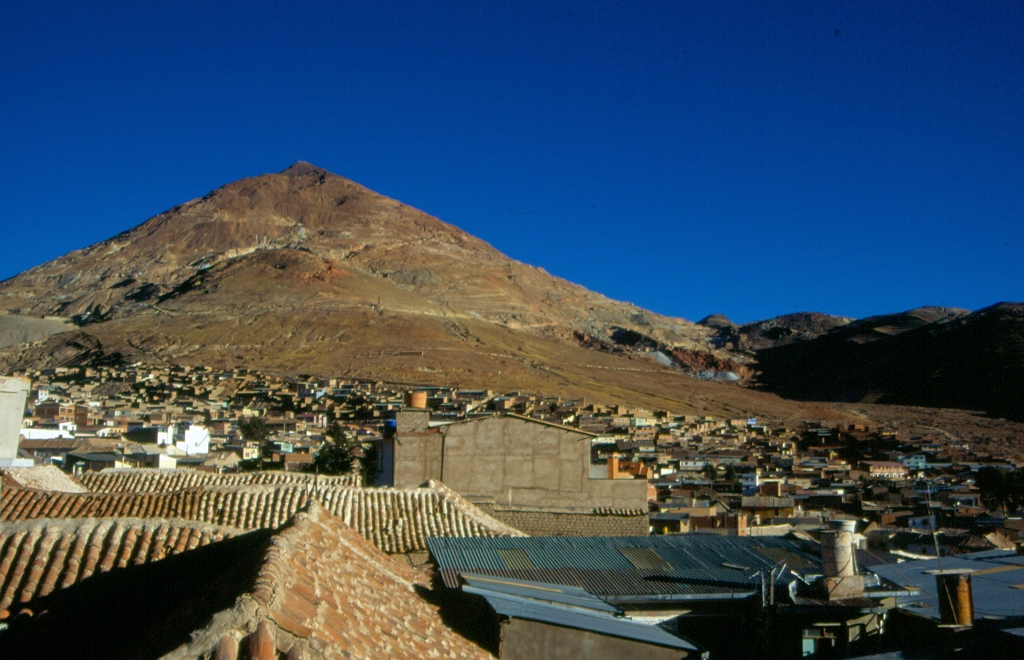 Rich mountain (Cerro Rico), Potosi
Rich mountain (Cerro Rico), Potosi
Still, not everything about the churches is bad. They are generally very beautiful and the stone portal of the church of San Lorenzo is particularly attractive because it is one of the best examples of a combination of the Christian art and the mestizo style, i.e., the arts of the Andes.
Unlike Sucre where it is prohibited to construct contemporary buildings in the historic centre, this is allowed in Potosi, but architects and urban planners still try to do it in a way that it fits into the setting or at least contributes to the accentuation of the old buildings’ beauty. One such example is a façade of a newer building that is all in mirrors reflecting an old belfry.
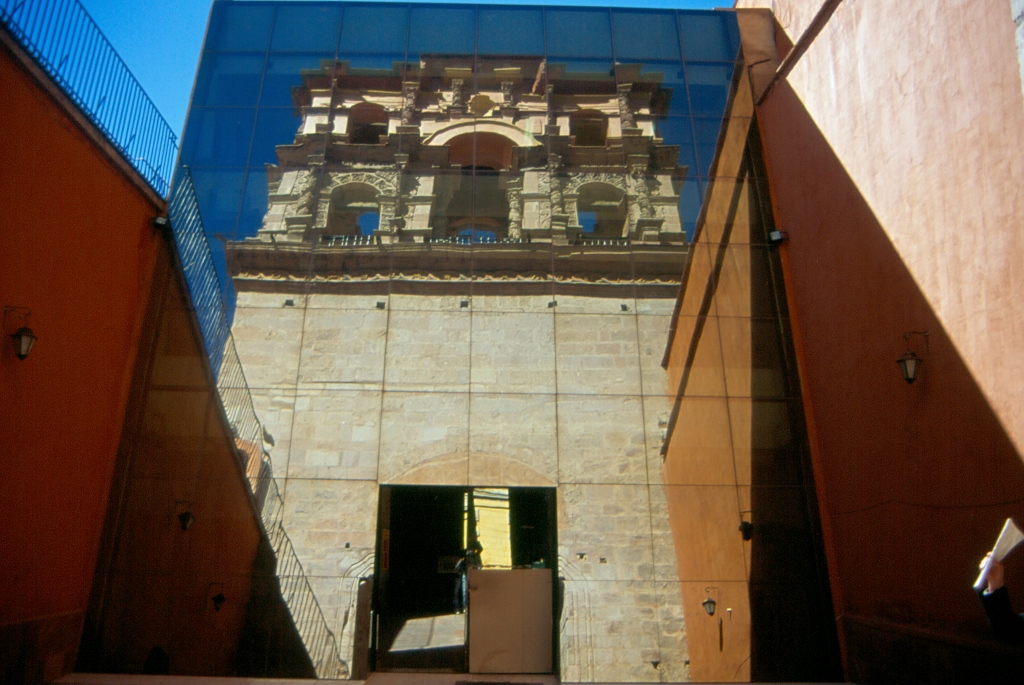 A modern building in Potosi
A modern building in Potosi
Other than busy streets, there are also quieter parts of the town, but it is evident everywhere that it used to be very wealthy. In its heyday, Potosi had over 200,000 inhabitants and it was the time when London had a similar number of residents. Nowadays, some 130,000 people call Potosi their hometown. While walking around I couldn’t help but notice that in addition to numerous churches there was also a large number of metal boards placed on buildings and advertising lawyers. I didn’t know what that was all about, but judging by the number of these boards this seemed to be the highest concentration of lawyers per capita that I had ever come across.
I also walked by an arch, Arco de Cobija, which marks an ancient city limit. Behind the arch is where slaves used to live. As I’ve mentioned, the main work force in Potosi were slaves. The Spanish brought them from Africa in their throngs and a large number of them soon died on account of extremely hard labour at such high altitudes. In the Casa de la Moneda, there is a large wooden wheel that had to be turned in circles. Since the mules engaged at first used to die after a couple of months of efforts and high altitudes, the authorities decided to move to slaves (I guess it was cheaper) whom they referred to as human mules. Four mules equal twenty slaves. Other than the African slaves, local population also worked in mines. The Spaniards managed to dig out some Inca rule from way back when under which local population had a “work obligation” of some 10 years. And this was where they decided to abide by local regulations!!!????
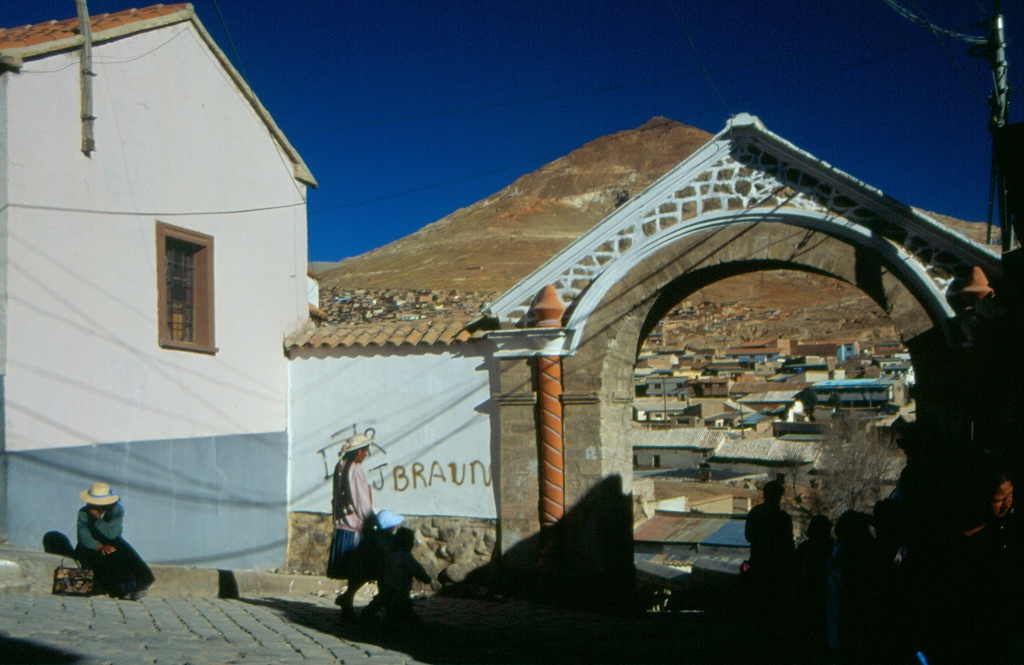 Arco de Cobija and Cerro Rico, Potosi
Arco de Cobija and Cerro Rico, Potosi
I also dropped at a tourist agency to see if they had to offer something I would find interesting. With a lot of enthusiasm they offered me a tour taking tourists to mines, but I flatly refused – nowadays there are no African slaves, but it is said that over 1000 children work in them. I said I could not watch that, but the people from the agency tried to convince me by saying that a certain amount is taken from the money earned from tours which is then used for improving the working conditions in the mines. With consternation I said that it should be the owners of the mines who should improve the working conditions and that these should not depend on casual tourist visits and then I marched out of the agency.
These mines are in fact one of the main attractions in Potosi. To tell the truth, originally I also planned to visit them and even thought of staying in the town for two days for this purpose, but when I read in more detail before coming to Potosi what it was all about, I gave up. In the past, there used to be some 6000 mines on Cerro Rico. This was the only place where the authorities allowed worshipping of the Devil without much concern. I guess it must have been like this. In their massive scale Christianisation of anyone they came across, the Spanish spoke of heaven and particularly of hell ruled by the Devil, talking about the torments of hell and about horrors awaiting all those who ended up there. As the conditions in the mines were indescribably horrible, the workers probably thought that it couldn’t get any worse than that anywhere and that they must be in hell already, so they started bringing gifts and placing them on special altars in the mines hoping to appease the ruler of hell. Even today, the main advertisement for tourists talks about how mines continue to be terrible: dirty, with narrow passages, hot (over 40 degrees C), dangerous (rocks tend to fall off and hard hats are mandatory), and needless to say they continue to be at extremely high altitudes. These mines are not just some kind of decoration or just a reminder of catastrophic human suffering from the past. Even today people continue to work in them under inhuman conditions. I simply had no desire to see that. Knowing it was there was already too much.
That’s why I left for Uyuni the next day. Waiting for my transportation at an informal station that also served as a mini farmers’ market, I watched people and events around me. Local women dress much more picturesquely than men. Many of them always wear traditional clothes that are truly beautiful. Also, a good portion of them wear hats of different shapes. When selling something, they place their goods around them, while either sitting on the ground or some mat, or sometimes just squatting. I rarely saw them using stools. They also work very hard and this can be seen by the size of burden they often carry on their backs, along with babies or small children. They wrap all of that into a blanket, throw it over a shoulder and tie it firmly in a knot against their chests.
I also saw there a large number of carts full of big tin pots. There were people sitting around the carts with bowls and plates, consuming cooked meals sold there on the spot from those pots. The food in the Andes, at least this is my impression, is linked to a lot of rules: ceviche and salteñas are eaten only in the morning, nothing even remotely cold is eaten in the afternoon or in the evening, but what I found most unusual was how much they love or rather adore soups and cooked food. This is so pronounced that during lunch time all markets were filled with people holding their bowls or plates and gulping down the meals with a spoon in their hand. Clear or thick soups, with lots of noodles, and then different versions of one-pot dishes. Whether they were sitting on the ground surrounded by bags of potatoes they were selling or in a large number of markets’ kitchens serving as restaurants, it was quite clear that a lunch and cooked food were not to be missed under any circumstances. What they do miss is bread. Bread in our traditional forms almost does not exist. There are buns and some types of pita-breads though. This is explained by the fact that there is always yucca, potato, maize or rice with a meal, but in my country even if there were mashed potatoes most of the people would eat bread with it. I think this is mainly because wheat is not traditional here, it does not grow at high altitudes, and it was much more rare than maize (after it had been brought from Europe) and consequently more expensive. Be as it may, bread is a relatively rare occurrence. Of course, it can be bought, but it seems to be used only with breakfast.
And then came the coach that was to take me to Uyuni after a six-hour journey, so this marked the end of my unscientific observation of the local wardrobe and looking into other people’s plates.